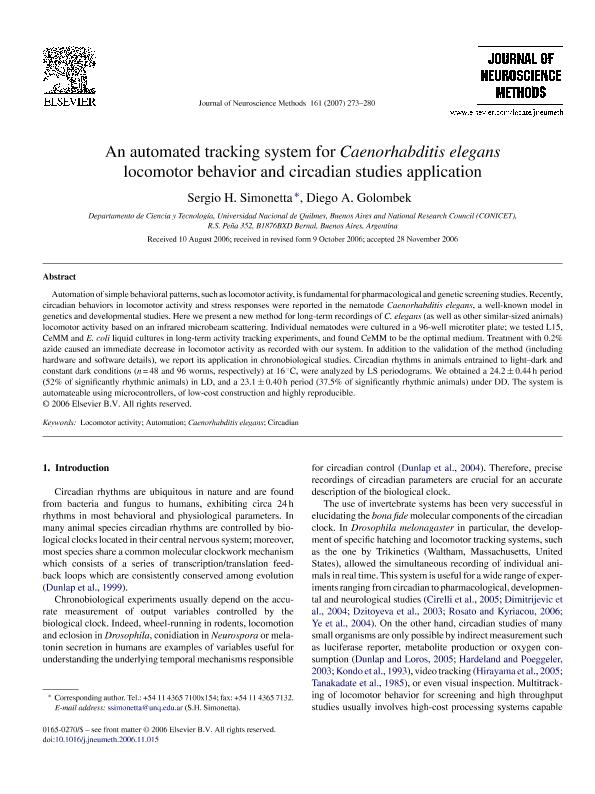Artículo
An automated tracking system for Caenorhabditis elegans locomotor behavior and circadian studies application
Fecha de publicación:
01/2007
Editorial:
Elsevier
Revista:
Journal of Neuroscience Methods
ISSN:
0165-0270
e-ISSN:
1872-678X
Idioma:
Inglés
Tipo de recurso:
Artículo publicado
Clasificación temática:
Resumen
ADP-ribosylation of host cell proteins is a common mode of cell intoxication by pathogenic bacterial toxins. Antibodies induced by immunization with inactivated ADP-ribosylating toxins provide efficient protection in case of some secreted toxins, e.g., diphtheria and pertussis toxins. However, other ADP-ribosylating toxins, such as Salmonella SpvB toxin, are secreted directly from the Salmonella-containing vacuole into the cytosol of target cells via the SPI-2 encoded bacterial type III secretion system, and thus are inaccessible to conventional antibodies. Small-molecule ADP-ribosylation inhibitors are fraught with potential side effects caused by inhibition of endogenous ADP-ribosyltransferases. Here, we report the development of a single-domain antibody from an immunized llama that blocks the capacity of SpvB to ADP-ribosylate actin at a molar ratio of 1:1. The single-domain antibody, when expressed as an intrabody, effectively protected cells from the cytotoxic activity of a translocation-competent chimeric C2IN-C/SpvB toxin. Transfected cells were also protected against cytoskeletal alterations induced by wild-type SpvB-expressing strains of Salmonella. This proof of principle paves the way for developing new antidotes against intracellular toxins
Palabras clave:
Circadian
Archivos asociados
Licencia
Identificadores
Colecciones
Articulos(IIBBA)
Articulos de INST.DE INVEST.BIOQUIMICAS DE BS.AS(I)
Articulos de INST.DE INVEST.BIOQUIMICAS DE BS.AS(I)
Articulos(SEDE CENTRAL)
Articulos de SEDE CENTRAL
Articulos de SEDE CENTRAL
Citación
Simonetta, Sergio Hernan; Golombek, Diego Andrés; An automated tracking system for Caenorhabditis elegans locomotor behavior and circadian studies application; Elsevier; Journal of Neuroscience Methods; 161; 2; 1-2007; 273-280
Compartir
Altmétricas




